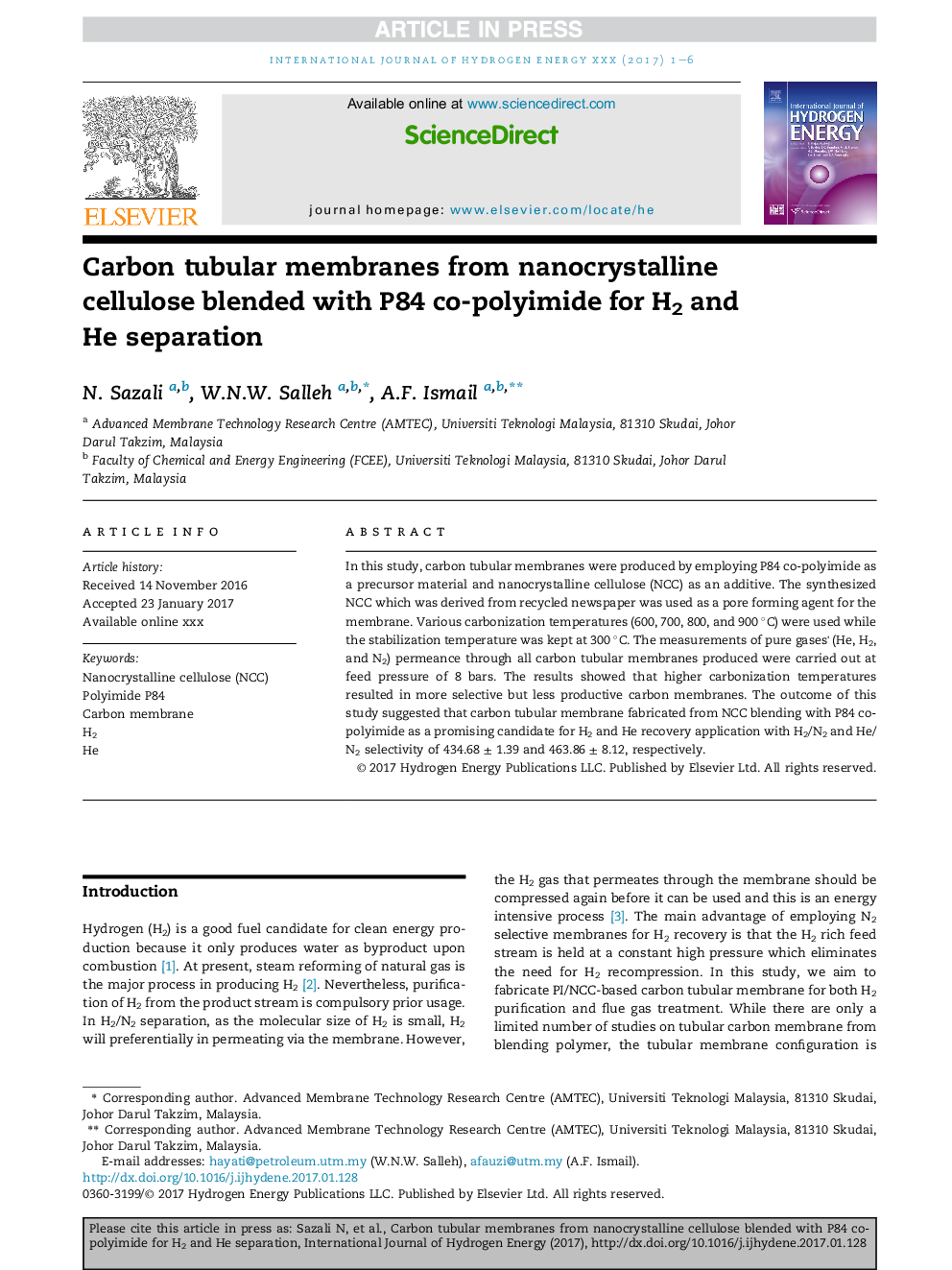| Article ID | Journal | Published Year | Pages | File Type |
|---|---|---|---|---|
| 5147969 | International Journal of Hydrogen Energy | 2017 | 6 Pages |
Abstract
In this study, carbon tubular membranes were produced by employing P84 co-polyimide as a precursor material and nanocrystalline cellulose (NCC) as an additive. The synthesized NCC which was derived from recycled newspaper was used as a pore forming agent for the membrane. Various carbonization temperatures (600, 700, 800, and 900 °C) were used while the stabilization temperature was kept at 300 °C. The measurements of pure gases' (He, H2, and N2) permeance through all carbon tubular membranes produced were carried out at feed pressure of 8 bars. The results showed that higher carbonization temperatures resulted in more selective but less productive carbon membranes. The outcome of this study suggested that carbon tubular membrane fabricated from NCC blending with P84 co-polyimide as a promising candidate for H2 and He recovery application with H2/N2 and He/N2 selectivity of 434.68 ± 1.39 and 463.86 ± 8.12, respectively.
Related Topics
Physical Sciences and Engineering
Chemistry
Electrochemistry
Authors
N. Sazali, W.N.W. Salleh, A.F. Ismail,
